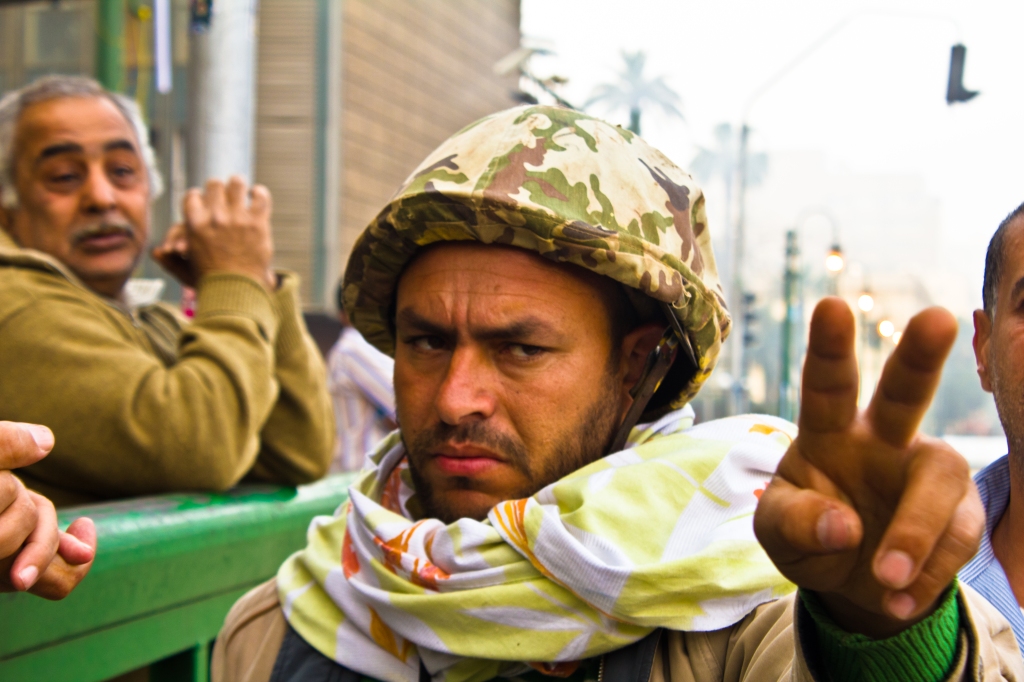Egypt’s revolutionaries fight the army, and win: eyewitness report and photo essay
[The following eyewitness report from Cairo's Tahrir Square was provided by Australian journalist Austin Mackell and first appeared at his website, Moon Under Water. It is posted at Links International Journal of Socialist Renewal with his permission.]
* * *
Story, video and photos by Austin G. Mackell, Cairo
April 9, 2011 – Moon Under Water – The ongoing revolution in Egypt has taken a dramatic turn, with protesters successfully resisting an assault by the army on Tahrir Square.
Yesterday (Friday, April 8) one of the largest protests in Egypt since the ouster of Mubarak took place. The protest itself represented an important break with previous mass demonstrations, in that Egypt’s armed forces, and in particular Field Marshal Tantawi – the head of the Supreme Military Council, were the focus of much of the anger displayed. There were even, among the protesters, some rebel army officers, who spoke out about corruption in the armed forces and called for an end to the rule of the Supreme Military Council, who have been in charge of the country since Mubarak’s resignation.
As has happened often since the army assumed power, they waited until late at night, blocked off all entrances to Tahrir Square, then attacked the crowd with tazers and batons, arresting many, including many of the defected soldiers. In a first, there was also extensive use of live ammunition, mostly it was fired above the heads of the crowds, but reports of injuries and even fatalities have been circulating. So far the Egyptian ministry of health has confirmed one dead. Reuters has reported two. There may be more. I was told today by a protester that he had seen the body of one person killed moved from the scene of the crime (outside the Tahrir KFC).
This time, however, the army didn’t manage to disperse the protest. Sometime around dawn, after fighting running battles around downtown Cairo through the night, the protesters retook the square, driving the soldiers out, trashing and burning army vehicles, then using them, along with the barbed wire and movable barriers abandoned by the army, to build barracades and cordon off the square. They then began putting up tents for the first time since their camp was destroyed on March 9.
While those in the activist community have long been critical of the army, which is closely tied to the formerly ruling National Democratic Party, to the United States and to Egypt’s business elite, many in the Egyptian population have had a deep faith in them. This faith has been eroded however by the army’s repeated attacks on demonstrations, its arrests, torture and prosecution through military tribunals of protesters, and in especially its repulsive subjection of female protesters to “virginity tests”. Not many, however, thought that there would be such a direct confrontation between the armed forces and the protesters so soon. Even fewer would have imagined the people would win. Again the Egyptian revolution has surprised me at least with its depth and strength.
After hearing that the square had been retaken I headed down and shot the images that appear at the beginning of this report. The video is much clearer if you watch it on youtube in HD.

A protester holds up an unfired bullet in the square. There were plenty of empty casings too, from both blank and live ammunition.

An egyptian man holds up two-finger V for victory signs next to the burning carcass of an army truck.

A young man celebrates next to a burning bus, which was being used to transport retreating soldiers when it was overrun and pelted with stones by the protesters, forcing the army to flee on foot.

A woman holds up a book stained with what she says was the blood of a victim of the army's attack last night.

The tents are back, this one being constructed out of some of the banners from the previous day's protest.










